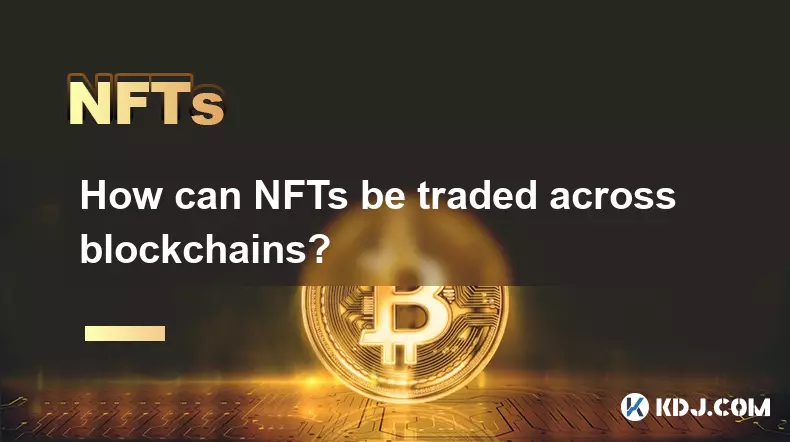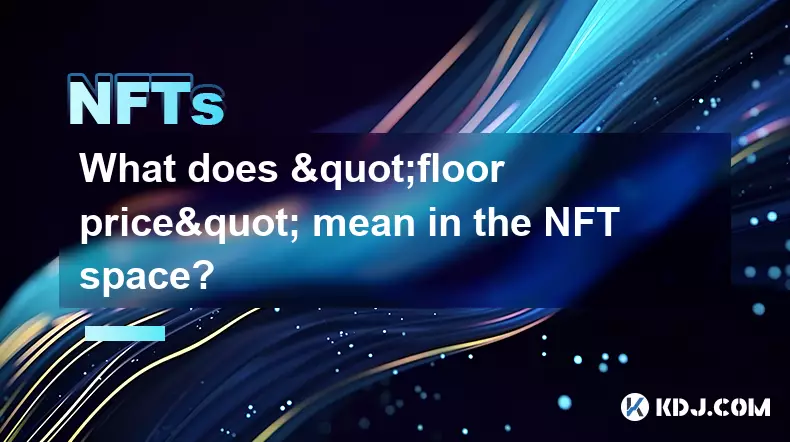-
 bitcoin
bitcoin $109523.663807 USD
-0.13% -
 ethereum
ethereum $4019.526508 USD
2.06% -
 tether
tether $1.000482 USD
0.00% -
 xrp
xrp $2.776815 USD
0.18% -
 bnb
bnb $958.942396 USD
0.12% -
 solana
solana $204.294698 USD
3.84% -
 usd-coin
usd-coin $0.999693 USD
0.00% -
 dogecoin
dogecoin $0.232115 USD
2.09% -
 tron
tron $0.338028 USD
0.84% -
 cardano
cardano $0.790920 USD
1.50% -
 hyperliquid
hyperliquid $44.871443 USD
5.60% -
 ethena-usde
ethena-usde $1.000322 USD
0.04% -
 chainlink
chainlink $21.034165 USD
2.60% -
 avalanche
avalanche $28.794831 USD
-0.54% -
 stellar
stellar $0.360466 USD
1.24%
What does "minting" mean in the NFT ecosystem?
Minting turns digital content into unique, blockchain-verified assets, enabling creators to establish ownership, scarcity, and earn royalties through decentralized networks.
Sep 21, 2025 at 06:55 am

Understanding Minting in the NFT Space
1. Minting refers to the process of creating a new NFT on a blockchain. When a digital file—such as artwork, music, or video—is minted, it becomes a verifiable and unique asset recorded on a decentralized ledger. This transformation turns intangible content into a collectible item with proof of ownership.
2. The act of minting involves uploading the digital file to an NFT platform that supports blockchain integration, such as Ethereum, Solana, or Polygon. During this process, metadata about the file—like its name, description, attributes, and creator—is encoded into a smart contract. This contract governs how the NFT behaves and ensures its authenticity.
3. Once minted, the NFT is assigned a unique identifier that distinguishes it from all other tokens on the network. This uniqueness prevents duplication and enables traceability across transactions. Each NFT exists independently, even if multiple editions of the same artwork are created.
4. Users can mint NFTs either through public platforms like OpenSea or Rarible, or via project-specific dApps. Some collections allow users to 'free mint,' where no upfront cost is required beyond gas fees, while others charge a fixed price in cryptocurrency for access to limited-edition drops.
5. Minting solidifies digital scarcity, enabling creators to monetize their work in ways previously impossible in traditional digital media ecosystems. It also allows collectors to own verifiable pieces of internet culture, ranging from profile pictures to virtual real estate.
The Role of Blockchain in NFT Minting
1. Blockchain technology serves as the backbone of NFT minting by providing immutability and transparency. Every minted NFT is stored as a record on the blockchain, making it resistant to tampering and forgery.
2. Different blockchains offer varying levels of efficiency and cost for minting. Ethereum remains the most widely used despite higher gas fees, while alternatives like Solana and Tezos appeal to users seeking faster transactions and lower environmental impact.
3. Smart contracts automate the minting process and enforce rules set by creators. These self-executing agreements define supply limits, royalty percentages, and transfer permissions, ensuring creators retain control over distribution and resale rights.
4. Decentralized storage solutions like IPFS (InterPlanetary File System) are often used alongside blockchain to store the actual digital file. While the NFT resides on-chain, the media is typically hosted off-chain but linked securely to prevent loss or manipulation.
5. The combination of on-chain tokenization and off-chain data storage creates a robust framework for digital ownership that resists censorship and central authority interference.
Economic Implications of NFT Minting
1. Minting has democratized access to digital art markets, allowing independent artists to bypass traditional gatekeepers such as galleries or auction houses. With minimal technical knowledge, creators can launch global collections instantly.
2. Royalty mechanisms embedded in smart contracts enable artists to earn a percentage each time their NFT changes hands. This recurring revenue model contrasts sharply with conventional art sales, where creators rarely benefit from secondary market activity.
3. Speculative demand drives much of the minting activity, especially during high-profile project launches. Limited supply and community hype often lead to rapid sellouts, with minted NFTs quickly appearing on secondary markets at significantly inflated prices.
4. Gas wars—competitive bidding for transaction priority on congested networks—can inflate minting costs unexpectedly. Projects on Ethereum frequently face these issues during peak hours, pushing users toward layer-2 scaling solutions or alternative chains.
5. The economic model around minting incentivizes early participation, fostering vibrant communities built around shared ownership and long-term engagement with digital assets.
Frequently Asked Questions
What happens if I mint an NFT but don’t sell it?Minting an NFT does not require immediate sale. You can hold it in your digital wallet indefinitely, use it as a profile picture, or display it in virtual galleries. Ownership remains yours unless you choose to transfer or list it.
Can someone else mint my artwork without permission?Yes, unauthorized minting—known as 'NFT theft'—occurs when individuals upload others' creations to NFT platforms. However, original creators can report infringements and request takedowns. Proof of authorship helps strengthen claims against fraudulent mints.
Is minting reversible?No, minting is irreversible due to blockchain immutability. Once an NFT is created and confirmed on the network, it cannot be deleted or altered. The only option is to transfer or burn the token, removing it from circulation.
Do I need coding skills to mint an NFT?Not necessarily. Many user-friendly platforms guide creators through minting with simple interfaces. Uploading a file, filling metadata fields, and paying network fees are usually sufficient. Advanced customization may require development knowledge, but basic minting is accessible to non-technical users.
Disclaimer:info@kdj.com
The information provided is not trading advice. kdj.com does not assume any responsibility for any investments made based on the information provided in this article. Cryptocurrencies are highly volatile and it is highly recommended that you invest with caution after thorough research!
If you believe that the content used on this website infringes your copyright, please contact us immediately (info@kdj.com) and we will delete it promptly.
- Sleep Token's Macabre Metal: A Ritualistic Rise to Rock Stardom
- 2025-09-27 22:25:15
- BlockchainFX: Is This Presale the Next Binance?
- 2025-09-27 22:25:15
- ORDER Token's Binance Listing Ignites Crypto Rally: What Traders Need to Know
- 2025-09-27 22:30:01
- Ethereum ETFs Feel the Heat: Investors Exit as Staking Approval Looms?
- 2025-09-27 22:30:01
- Crypto Presales & Meme Coins: Hunting for the Next 100x Opportunity
- 2025-09-27 22:30:01
- Cardano (ADA) Price Prediction: Bullish Scenarios and Market Dynamics
- 2025-09-27 22:30:16
Related knowledge

How can I determine the authenticity of an NFT project?
Sep 23,2025 at 05:18pm
Understanding the Project Team and Their Background1. Research the identities of the team members behind the NFT project. Verified social media profil...

What's the difference between NFTs and traditional collectibles?
Sep 19,2025 at 12:55pm
Digital Ownership and Provenance1. NFTs are built on blockchain technology, which ensures transparent and immutable records of ownership. Every transa...

How can NFTs be traded across blockchains?
Sep 19,2025 at 12:00pm
Understanding Cross-Chain NFT Trading1. Non-fungible tokens (NFTs) are digital assets that represent ownership of unique items on a blockchain. Origin...

How is NFT rarity calculated?
Sep 18,2025 at 07:54pm
Understanding NFT Rarity Metrics1. NFT rarity is determined by analyzing the uniqueness of individual traits within a collection. Each NFT typically c...

What does "floor price" mean in the NFT space?
Sep 22,2025 at 06:36am
Floor Price: A Core Metric in the NFT Marketplace1. The term floor price refers to the lowest current asking price for any item within a specific NFT ...

How do NFTs help content creators?
Sep 18,2025 at 08:00am
NFTs Empower Creators with Ownership and Monetization1. NFTs provide content creators with verifiable ownership of their digital works, ensuring authe...

How can I determine the authenticity of an NFT project?
Sep 23,2025 at 05:18pm
Understanding the Project Team and Their Background1. Research the identities of the team members behind the NFT project. Verified social media profil...

What's the difference between NFTs and traditional collectibles?
Sep 19,2025 at 12:55pm
Digital Ownership and Provenance1. NFTs are built on blockchain technology, which ensures transparent and immutable records of ownership. Every transa...

How can NFTs be traded across blockchains?
Sep 19,2025 at 12:00pm
Understanding Cross-Chain NFT Trading1. Non-fungible tokens (NFTs) are digital assets that represent ownership of unique items on a blockchain. Origin...

How is NFT rarity calculated?
Sep 18,2025 at 07:54pm
Understanding NFT Rarity Metrics1. NFT rarity is determined by analyzing the uniqueness of individual traits within a collection. Each NFT typically c...

What does "floor price" mean in the NFT space?
Sep 22,2025 at 06:36am
Floor Price: A Core Metric in the NFT Marketplace1. The term floor price refers to the lowest current asking price for any item within a specific NFT ...

How do NFTs help content creators?
Sep 18,2025 at 08:00am
NFTs Empower Creators with Ownership and Monetization1. NFTs provide content creators with verifiable ownership of their digital works, ensuring authe...
See all articles









































































